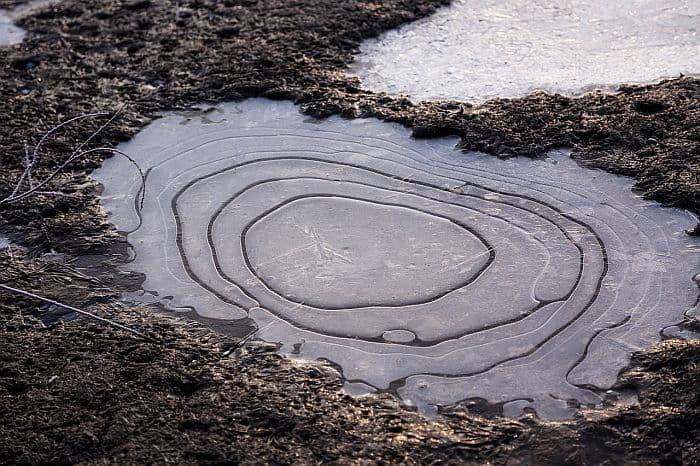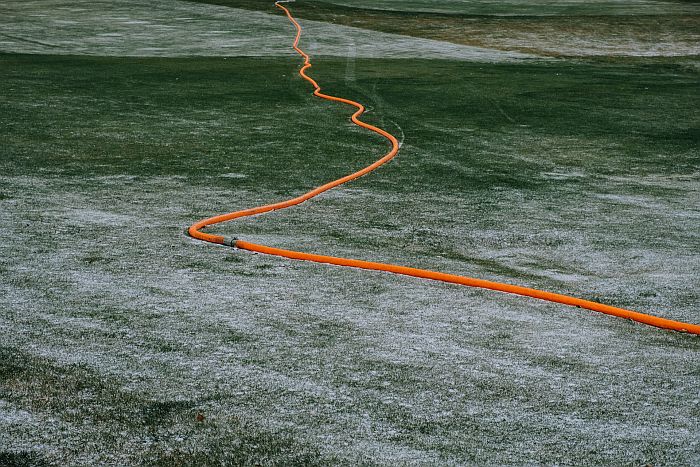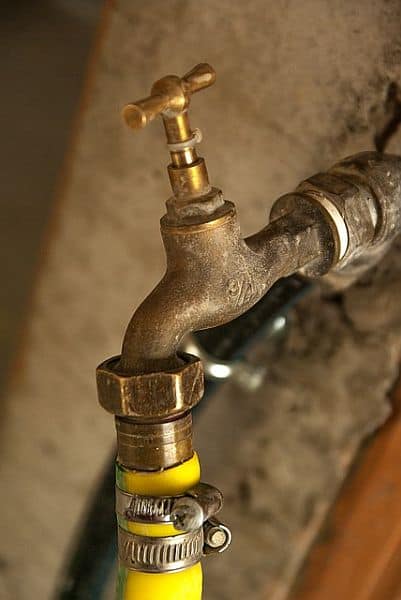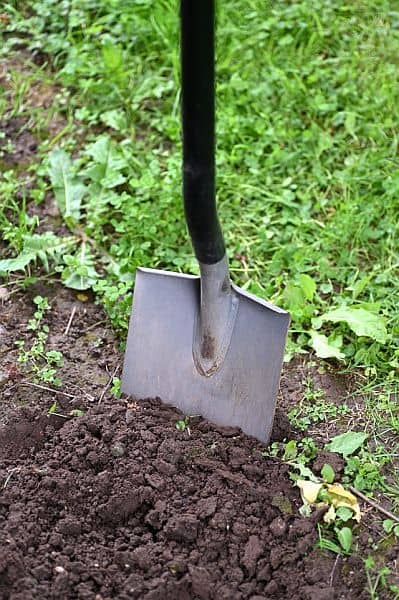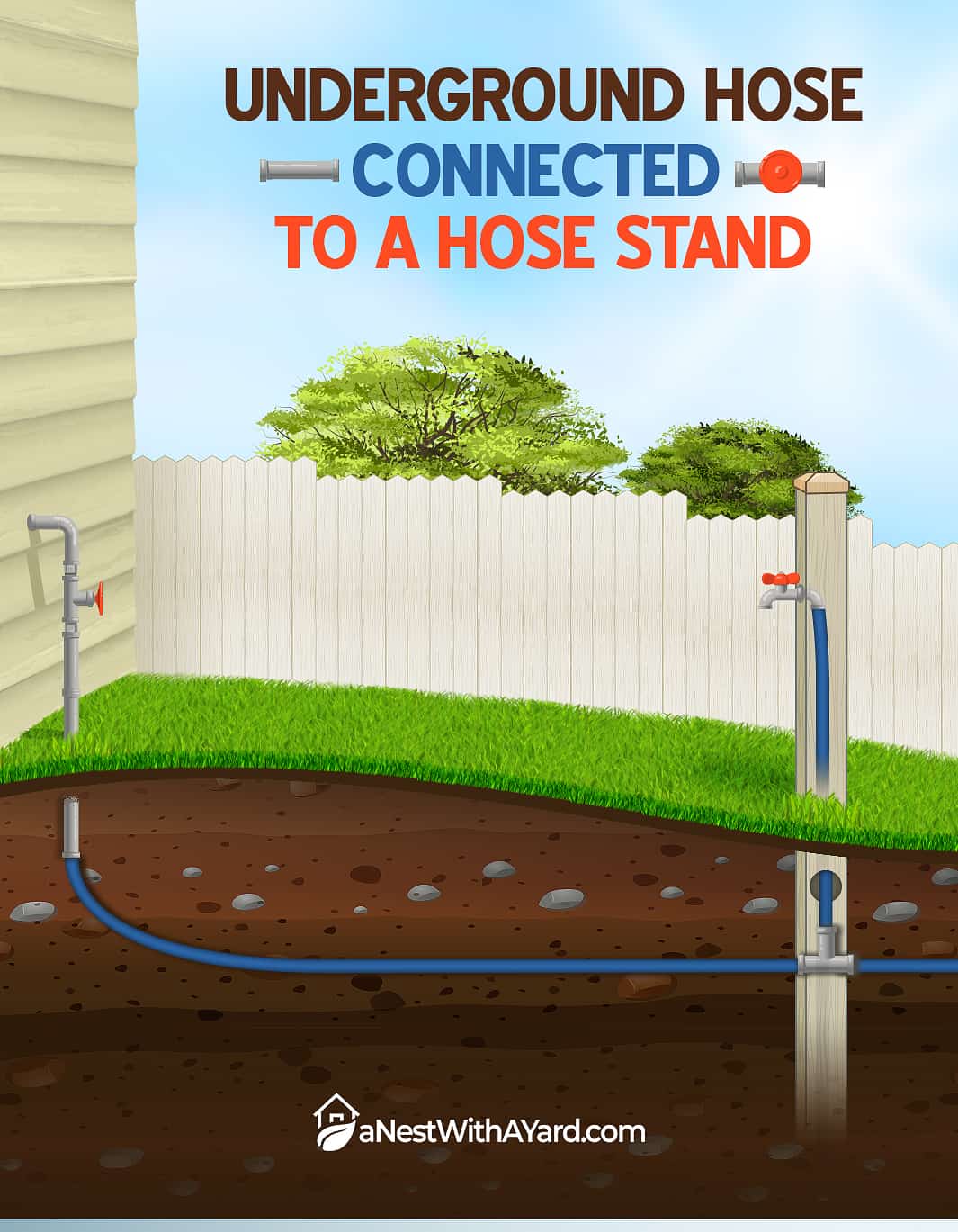How gorgeous does this yard look? Those flower gardens are in full bloom and the lawn is lush green, but no garden hose in sight! You, too, can achieve the same look in your backyard by following my step-by-step tutorial on how to bury a garden hose!
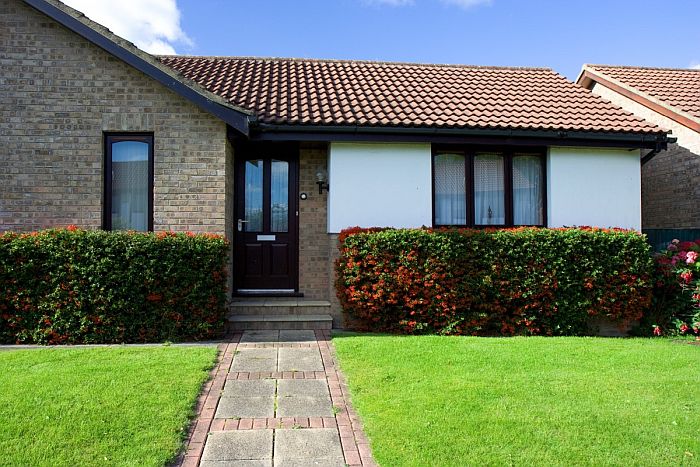
Many of us don’t like the idea of uncoiling a garden hose, dragging it across the yard to the garden, and packing it up at the end of the day, only to do the same thing the next morning.
I don’t like tripping on it or running over it with my lawnmower either! I figure all this can be avoided by simply burying a water hose under the ground.
This prompted me to write a complete guide on how to convert a garden hose into an underground water hose. It is pretty simple, actually! I can’t wait to show you the process. Let’s get to it!
Contents
How To Bury A Garden Hose
What You Will Need
- Measuring tape
- Garden hose
- Hose fittings
- Shovel or a trenching spade
- Grass seeds
- Garden hose stand with a faucet
Steps
Here’s a guide on how to bury a garden hose underground:
- Evaluate The Conditions
The first thing you need to do is decide whether burying a hose in your backyard is the right choice for you. At the end of the day, you want your underground hose to make your gardening and landscaping easier, not more difficult.
Anybody can bury a hose in their backyard, but some may find the process more difficult and end results not worth it. Here’s why…
Climate, ground type, and critters are factors that will affect this project, either positively or negatively.
Indeed, buried garden hoses don’t freeze as easily as those left on the grass. But if you live in a particularly cold climate, in an area prone to freezing, you can expect your garden hose to freeze under the soil.
Luckily, most garden hoses sold today can handle extreme temperature swings. Garden hoses left to freeze in the ground will still break down quicker, especially if not winterized.
If you get harsh winters where you live, you might want to skip burying the hose in the ground. You won’t be able to use it until the ground defrosts.
Rocky and heavily compacted soil is another challenge you may face. Digging through such soil by hand will be difficult, despite your motivation. If this is the condition of your ground, you may have to rent a trencher.
Let’s not forget about the critters! They love fresh, cold water in the summer and they may eat through your underground garden hose to get to it! If you have a problem with squirrels, mice, and moles in your backyard, you might want to consider using PVC pipe to distribute your water, as it’s tougher than rubber. - Pick The Right Garden Hose For You
The next thing you want to do is buy the right type of garden hose. I recommend you buy one of these garden hoses for underground use:
Rubber Hose
Rubber and polyurethane hoses are an excellent choice for this project. This should be your go-to hose for getting water from your hose to your garden.
They are sturdy and durable enough to handle water pressure and the weight of the soil and rocks. Most of them can handle extreme temperatures, as well. Most importantly, they don’t kink easily when laid flat on the ground. You can check the best no kink hoses right here.
Soaker Hose
If you want to water the area where the hose is running across, you can buy a soaker hose, also known as a drip hose. These hoses are ideal for burying in gardens and flower beds. I highly recommend you consider making an underground watering system if you get long droughts in the summer.
Metal Hose
You can even use a metal garden hose for this project. Stainless steel hoses are especially known for their durability and strength. They can’t be punctured, cut, or torn. You can bury them deep into the ground and they won’t get flattened.
Stainless steel hoses don’t kink and are weather-resistant. The critters won’t be able to chew through them either. - Pick The Right Length
Once you are settled on the type of garden hose, you will have to decide on its length.
Measure the distance from the outdoor house spigot to your garden. Don’t forget to account for the length that will be above ground running from the house faucet to the ground and from the ground to the hose station that you will build next to your garden.
Garden hoses are sold by the foot or in a variety of pre-cut lengths, ranging from 25 to 100 ft. If you don’t find the exact length you need, you can buy two shorter hoses and connect them together with male and female couplings.
It is better if you use a garden hose that has the required length than to connect shorter hoses to reach the distance. Metal couplings can eventually corrode and rust in the damp ground and may leak over time. - Dig A Trench
image credit: flickr.com
You can finally head outdoors to get your hands dirty. Burying a garden hose is pretty easy. First, you will have to dig a trench.
Dig a trench 3 to 4 inches deep, going from your hose to the desired destination. You can dig deeper if needed. The deeper your trench is, the stronger hose you will need to hold the weight of the soil.
It is enough for your trench to be 2 inches wide. A garden hose will fit in it perfectly. Digging a wider and deeper trench is unnecessary, and will only strip you of your energy.
Try to dig a trench as straight as possible. Try to avoid going around threes, your shed, and other obstacles in the yard. Any sharp turns may lower the water pressure and restrict the water flow going through the hose.
I also recommend you carefully scalp the top of the lawn first. You can later put back these grass patches to camouflage your trench and make things prettier.
You can use your trusty shovel to dig out a trench. Keep in mind that shovels are quite wide and dig deep. You may end up digging more than needed. Use a trenching spade instead. It is designed specifically for burying PVC pipes, electrical cables, and garden hoses.
If you’re unsure of what tool to use, there is a video guide that can help you down below. - Connect The Hose To The Main Faucet
If your garden hose is disconnected from the spigot at the side of your hose, now is the time to connect it. Once the hose is on the spigot, you will know exactly how much of it will stay above the ground and what goes under the ground. - Lay Down The Garden Hose
Carefully lay the garden hose in the trench. Lay it as straight as you can without any kinks and twists. Get a family member to help you out.
Leave the front and the end part of the garden hose above the ground, so you can connect it to the house faucet (if not connected already) and the hose station you will create next to your garden. - Cover The Trench
Now that you are satisfied with the placement of your garden hose, you can cover it with dirt. Push the soil back into the trench using your shovel.
Avoid compacting the soil too heavily into the trench, as it may flatten your garden hose and restrict water flow. If there is any excavated soil left, you can transfer it to your garden and flower bed.
If you followed my advice and saved the top layer of the grass, you can place it right on top of the trench to hide it. You can also replant grass across the whole length to make your lawn even and pretty. - Install A Garden Hose Stand
Some people may call it a day and leave the end of the hose coming from the ground as is. But, I highly suggest you consider building a garden hose station. It will keep your garden organized and looking neat. It will also improve your curb appeal.
You can find some amazing garden hose stands, with or without a faucet. The stores that sell them have one for every style and aesthetic.
Installing a garden hose stand is very simple. You simply push the stakes in the ground with your foot. If the stand has only a pole without stakes, you will have to dig a hole and bury it in the ground.
Follow the installation instructions that come with the garden hose stand, and you won’t face any difficulties. - Connect The Hose To The Hose Stand
I recommend you use a garden hose stand with a faucet for this project. It will give you more control. It allows you to turn the water on and off right there and then, close to your garden. You won’t have to rush back to your house every time you want to turn off the water.
Connect the end of your buried garden hose to the faucet on the stand by screwing the male and female fittings together. That’s it! You are all done! Now you can connect a separate garden hose to the faucet, as well, and start tending to your garden.
What Tool To Use For Digging A Trench Video Guide
This video will help you decide which tool to use when you’re digging a trench:
FAQs
Is It OK To Bury Water Hose?
It is OK to bury a water hose to get water from one end of the yard to the other. You can bury it 3 to 4 inches deep using a shovel or a trenching spade. A buried water hose will make your watering chores easier and hassle-free.
How Long Will A Rubber Hose Last Underground?
How long a rubber hose lasts underground depends on several factors, but generally speaking, it can last anywhere from one year to several years. Just know that a rubber hose will get damaged quicker in rocky soil and in ground prone to freezing.
That’s How You Bury A Garden Hose
See? Burying a garden hose isn’t that difficult! You don’t need any special tools to do it, just your trusty shovel and some elbow grease.
I like making things easier for myself, especially when I am watering garden. Burying a garden hose in the ground is a great hack that will save you time and energy. You won’t have to drag it across your lawn anymore or trip over it when you are taking out the trash.
Did you find my tutorial on how to bury a garden hose helpful? Let me know in the comments below, and feel free to share my tips on social media.
